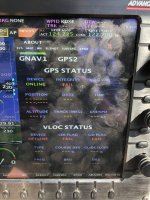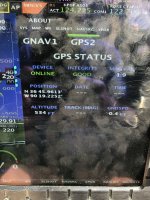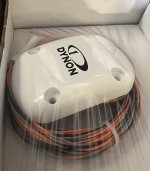I’m sure I’ll get roasted here as there is a lot of support for the AFS EFIS. My experience has been Honeywell, Collin’s , Garmin with several generations of each with smaller “GA” boxes thrown in for good measure.
First, I’m very glad my RV6 has EFIS of some type as the info makes it so much easier for x country trips which is my main use. I’ve read several articles by R Leffler and he has some solid advice concerning bouncing between internal flight plans, etc. Most of the AFS “architecture “ seems ok for VFR flying but lacks structure and clarity for weather flying. Garmin has a learning curve but is very intuitive for most pilots. I have a basic understanding of the internal flight plan but I’m still developing a safe, effective cockpit setup for weather flying. I welcome input on how you manage your avionics for weather flying.
GTN 650
Trutrack autopilot
5600 PFD
5600 MFD
Remote audio panel
Remote autopilot controls (not a fan for IFR flying)
First, I’m very glad my RV6 has EFIS of some type as the info makes it so much easier for x country trips which is my main use. I’ve read several articles by R Leffler and he has some solid advice concerning bouncing between internal flight plans, etc. Most of the AFS “architecture “ seems ok for VFR flying but lacks structure and clarity for weather flying. Garmin has a learning curve but is very intuitive for most pilots. I have a basic understanding of the internal flight plan but I’m still developing a safe, effective cockpit setup for weather flying. I welcome input on how you manage your avionics for weather flying.
GTN 650
Trutrack autopilot
5600 PFD
5600 MFD
Remote audio panel
Remote autopilot controls (not a fan for IFR flying)




